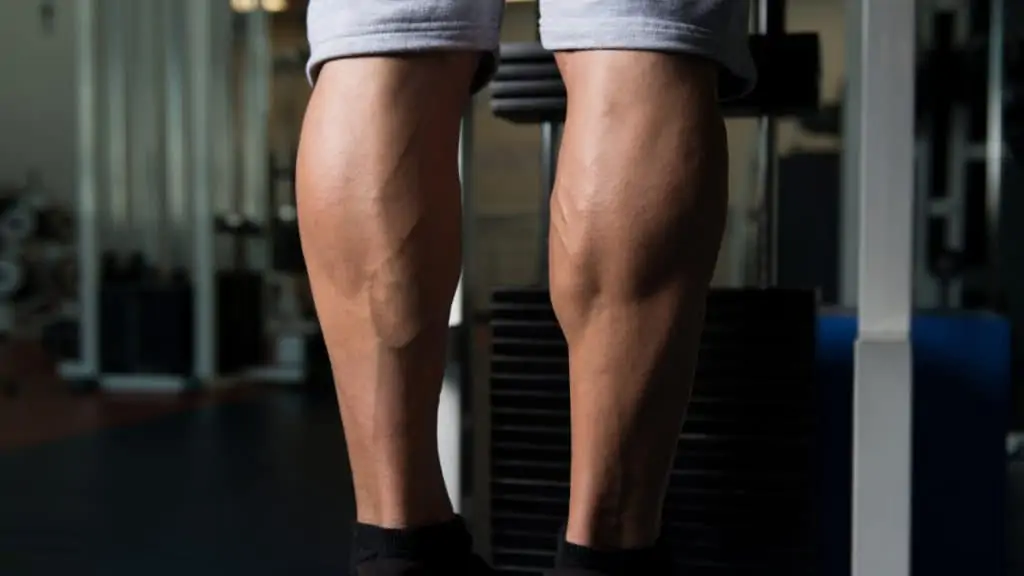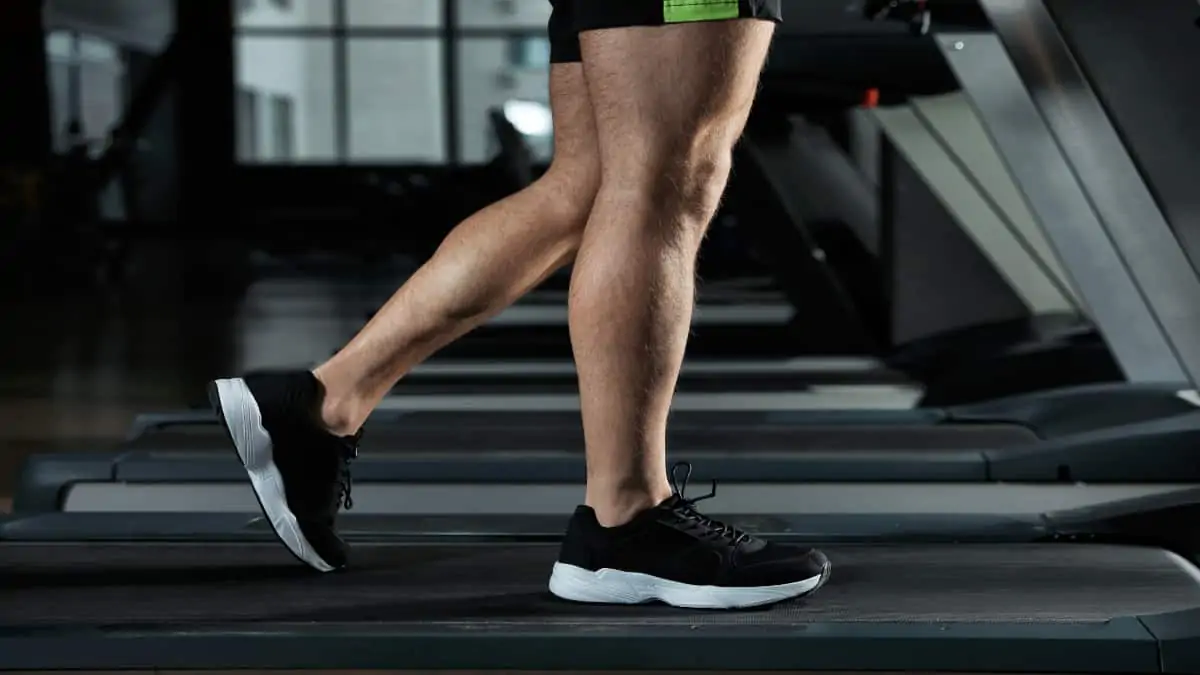Believe it or not, 14 inches is just below the average calf circumference for both men and women, according to a US government report published in 2008.
However, based on my experience as a personal trainer (I’ve observed a lot of calves in my time), 14 inch calves are a normal measurement for women and slightly smaller than average for men.
As you’ll soon learn, men and women have very similarly sized calves, and for a good reason.
See How Your Calves Compare:
Are 14 inch calves big?

How big are 14 inch calves?
In general, 14″ calves aren’t that big and, according to some research, are actually a bit on the small side (unless you’re over 70).
This research was conducted in the US, which, at the time of writing, has an obesity rate of 36%, [1] so that may explain why so many study participants had calves that were bigger than 14 inches.
However, I think that even though obesity may count for some of the calf size, there’s a more likely explanation as to why most people have calves that are bigger than 14 inches.
Of course, if you have 14 inch defined calves, then that’s very different from having chubby 14 in calves.
Your calves may actually look larger than they really are if they’re lean because they’ll naturally appear muscular due to you having less body fat. [2] This is particularly true if you’re short (14″ calves just don’t look that big on tall people).
How do you get a 14 inch calf circumference?

Most men and women can get a 14 inch calf circumference by simply going about their everyday lives.
While you might not be working your calves with weights while you walk to work or around the grocery store, you are still training your lower legs with resistance, specifically with your body weight.
This fact explains why many people can get muscular calves without trying. The calves, after all, are just pieces of meat, which means that they can’t distinguish between the weight of your body and the weight of a barbell. In other words, like any muscle, the calves just respond to the tension that you put them under.
Additionally, overweight and obese individuals often have 14 inch calves or bigger because their calves have to work even harder to carry their large body mass around, which can lead to a lot of growth. This is especially true if an overweight person plays sports or does plenty of walking.
How big are 14.5 inch calves?

You might not think that there’s an awful lot of difference between 14 inch calves and 14.5 inch calves. But depending on your genetics, half an inch can make a big difference to the appearance of your calves.
For example, at an equivalent calf size, the lower legs of short people will always look thicker and wider than those of taller folk. As such, going from 14 inch calves to 14.5 inch calves can make your lower legs look much chunkier, which may not be a look that you want to attain.
Additionally, if your calves are really stubborn, then adding half an inch in circumference is actually a big achievement. While a half-inch is unlikely to transform your calves into bulked-up cows, it can certainly enhance their appearance and muscularity.
How can you increase your 14 inch calves?

As mentioned, your calves are already accustomed to supporting your body weight for prolonged periods of time.
Therefore, if you want to maximize their development, you need to train them with a more intense stimulus which, for most people, means lifting weights.
Of course, simply walking in the park can build your calves up to a point (which is heavily influenced by your genetics).
However, some people simply aren’t satisfied with their current calf size, and weight training is definitely the best way to build your calves to 14 inches and beyond.
I recommend starting with 3-4 hard sets twice per week. Your calves will be very sore initially as they begin to adapt to this novel stimulus, but the temporary discomfort will be worth the calf gains if you want to bring up your lower legs.
Conclusion: Should you be satisfied with having 14 inch calves?

There’s nothing wrong with having 14 inch calves unless such a circumference leads to health problems (such as having an overweight or underweight BMI).
Even at the same measurement, some people wish that their calves were bigger (typically men), while others wish that their calves were slimmer (mainly women).
The good news is that you’re in control of your calves. If you’re happy with your 14″ calves, then you can likely maintain them by just going about your daily business.
On the other hand, if you’d like to gain some calf muscle, then you can do so by training them with weights or simply doing plenty of bodyweight calf raises if you don’t want to go to the gym.
References
- Haqqi, T. (2020, September 29). 25 Most Obese Countries In the World. Yahoo! https://www.yahoo.com/now/25-most-obese-countries-world-021239350.html
- DiGiulio, S. (2019, November 5). How to get more muscle definition (and what you should know about why you’re not). NBC News. https://www.nbcnews.com/better/lifestyle/how-get-more-muscle-definition-what-you-should-know-about-ncna1076431

